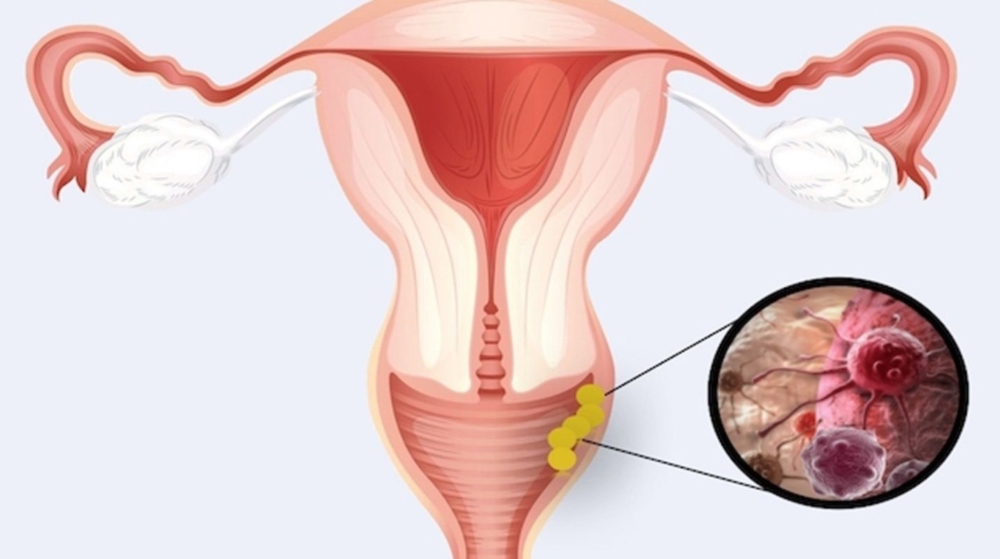Some pathologies are prone to age binding and appear only in a certain period of a person’s life. One of these diseases, vaginal cancer, most often lies in wait for women whose age has reached the mark of 50 and older, less often - girls of preschool girls.
It is difficult to predict the development of cancer even in the presence of provoking factors. But you can save your health, and most importantly, save your life, if you recognize the pathological signs in time and undergo the course of treatment prescribed by the oncologist.
Material Content:
What is vaginal cancer?
Cancer is one of the most dangerous diseases affecting the tissues of living organisms. A huge number of leading scientists in the world are looking for a way to suppress cancer cells. To date, the successful treatment of such ailments is possible only with the early detection of tumors.
But in this case, the treatment process takes a lot of time, it takes a lot of strength and health of the patient.
The main pathomorphological sign of cancer is the formation of carcinoma - a malignant tumor that occurs due to the division of mutating cells. Their aggressive growth in the tissues of the mucous membrane that strengthens the walls of the vagina leads to the formation of cancer.
As the tumor develops aggressively, its cells spread along the lymph, capture nearby tissues and organs, and form new cancer foci.A scenario for the development of secondary cancer of the vagina is also possible, in which the course of the process occurs against the backdrop of an ailment, manifesting itself in nearby organs - the uterus, ovaries, and kidneys.
Classification and stages of the disease
The walls of the vagina have a three-layer structure: the outer one, consisting of connective tissue, the middle layer, characterized by smooth muscles, and the inner one in the form of a mucous membrane. In addition, mucus-producing glands are located on the walls of the vagina.
When cancer occurs, tumors can affect any structural part of the vagina. Therefore, the types of disease are often distinguished by histological type.
The vaginal mucosa is formed by stratified squamous epithelium. Malignant tumors of its tissues are classified as squamous cell carcinoma. This type of pathology is diagnosed in 85% of cases of the disease.
Less common are clear cell adenocarcinomas that affect the glands of the vagina, leiomyosarcomas on smooth muscles and melanomas that occur on the walls of the lower and deep sections of the organ.
Stages of progression of tumor formations of the vagina
The development of vaginal cancer is gradual. Each stage is characterized by an increase in the size of the tumor, as well as the degree of involvement of the surrounding tissues and organs.
The main phases of the development of vaginal cancer:
- preinvasive stage. The formation of a cluster of histologically altered cells. It is characterized by slow growth, therefore it can last up to ten years;
- first stage. The tumor is located within the organ at the level of the submucosal layer, and its size does not exceed two centimeters. There are no metastases;
- second stage. The depth of invasion and the size of the neoplasm persist or slightly increased. The accumulation of cellular elements indicates the infiltrating progress of tumor processes within the pelvic walls, but without the capture of their tissues. There are no metastases;
- third stage. The tumor penetrates into nearby tissues, there are mobile metastases that spread through the lymph nodes;
- fourth stage. There is a pronounced aggression of the tumor. Metastases affect the organs of the urinary and reproductive systems, and also capture distant tissues and organs.
In oncology, the last stage is called progressive and metastatic.
Causes of the disease
Despite many years of research, doctors have not yet been able to establish the exact causes of the development of cancer. But then it was possible to clarify the circumstances preceding the appearance of malignant tumors or provoke their formation.
In most cases of diagnosed vaginal cancer, the following risk factors were noted in the lifestyle and health features of the patients:
- human papillomavirus;
- endocrine dysfunction;
- vaginal adenosis;
- HIV
- dysplasia of the cervix and vagina;
- radioactive exposure;
- mechanical irritation of the epithelium of the walls of the organ;
- smoking and alcohol.
In addition, a general weakening of the body and the immune system contribute to the development of the tumor.
Symptoms and signs of vaginal cancer
At the stage of preinvasive development, pronounced signs of vaginal cancer are usually absent. But it is possible the appearance of nonspecific symptoms inherent in many other diseases - discomfort during intimate relationships, itching of the genitals, minor spotting, constipation, and urination impairment.
As the disease develops, its manifestations become significantly pronounced, clearly indicating the localization of pathological foci:
- pain in the pelvic, sacrum, pubis, as well as in the groin;
- the occurrence of compacted formations on the vaginal tissues;
- increased intensity of secretions. The appearance in them, as well as urine and feces, of impurities in the form of blood and pus;
- dysfunctions of the organs of the genitourinary sphere and intestines - pain in urination, frequent urination, constipation and bowel movements;
- swelling of the legs.
The growth of neoplasms on the walls of the vagina negatively affects the general well-being of a woman - against the background of a slight increase in temperature, weakness, lethargy and a constant feeling of fatigue appear, and pallor of the skin indicates the development of anemia.
Diagnosis of the disease
The timely detection of cancer is the key to a successful cure.
Pathologically altered areas of the vaginal epithelium - the presence of infiltrate, erosive foci, ulcerations, thickenings or papillary growths are detected, as a rule, during a gynecological examination.
Even with the slightest suspicion of oncology, the doctor must prescribe additional diagnostic tests: a smear for cytological analysis, a study of the walls of the vagina with a coloscope, a biopsy of the tumor tissue.
When confirming a cancerous lesion, the next stage of diagnostic measures is carried out - determination of metastases, their quantity and localization.
The most effective cancer diagnostic procedures include:
- Ultrasound of the pelvic organs - visualization of the affected tissues in a transvaginal or transabdominal way;
- cystoscopy - examination of the bladder using an endoscope. Provides for biopsy;
- computed tomography - a method for determining the shape and size of a tumor, the degree of damage to neighboring organs and lymph nodes;
- sigmoidoscopy - the study of intestinal tract located near the tumor;
- positron emission tomography is a method of searching for metastases using a substance that includes a radioactive label. Its accumulation in cancer cells allows us to determine their number and location;
- magnetic resonance imaging is a complex study of internal organs and tissues. Allows you to establish biochemical violations of the structure of tissues and assess the extent of damage to the body by metastases;
- Radiography - determination of the presence of metastases in the lungs. The method is used in the last stage of the disease.
An important stage in the diagnosis is the differentiation of the vaginal carcinoma from benign tumor formations.
Treatment of ailment
The choice of treatment for vaginal cancer depends on the specifics of the disease. During the pre-invasive period are shown:
- surgical method - vaginectomy with partial or complete excision of the vagina, removal of the uterus, loop electroexcision of the uterus with the removal of pathological formations on its neck;
- exposure to chemical and radiation therapy.
Invasive forms of vaginal cancer are treated with radiation exposure remotely, intracavitary or interstitial. The last method of therapy involves the direct injection of radioactive drugs into the tissue affected by carcinoma.
Depending on the individual specifics of the development of the disease in the patient, the methods of treatment can be used individually or in combination.
Surgery in the final stages of vaginal cancer is not recommended.
Survival forecast
To determine the prognosis of such a disease, doctors use the term five-year survival. Analysis of statistical data shows that within 5 years after the detection of the disease, the highest percentage of survivors is observed in patients with preinvasive and first stage of cancer.
A less favorable prognosis for patients with the second stage of the disease - the number of survivors is 65%. At the third and fourth stages of cancer, an unfavorable outcome is assumed - the number of positive treatment outcomes is 34% and 18.9%, respectively.
Complications after treatment
Even the most modern methods of treating cancer pathologies cannot guarantee the absence of complications. The use of surgical methods, chemo and radiation therapy leads to health problems in the form of the following manifestations:
- severe bleeding;
- abdominal pain;
- the occurrence of ulcers on the walls of the vagina;
- the formation of fistulas in areas bordering the rectum;
- general weakening of the body;
- hair loss
- infertility.
After applying a loop electroexcision, there is a possibility of premature birth and the birth of premature babies.
In addition, even in the event of remission, the risk of relapse with the development of tumors in nearby organs remains.
Surgical intervention is one of the causes of early menopause with the accompanying effects - sweating, excessive dryness of the skin in the genital area, and a sharp change in mood.
In most cases, the diagnosis of cancer in women causes a huge amount of negative emotions and leads to depression, and the inability to have sex enhances such conditions.
Cancer is considered one of the most common causes of death in the world. All women have the opportunity to defeat the disease. It is enough to lead a healthy lifestyle, take sex seriously and undergo regular checkups with a gynecologist.


















